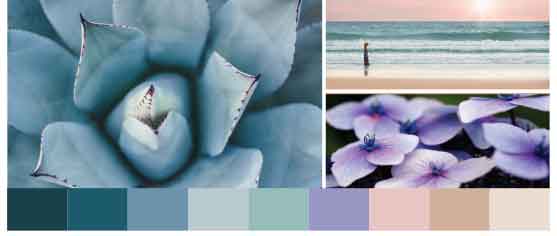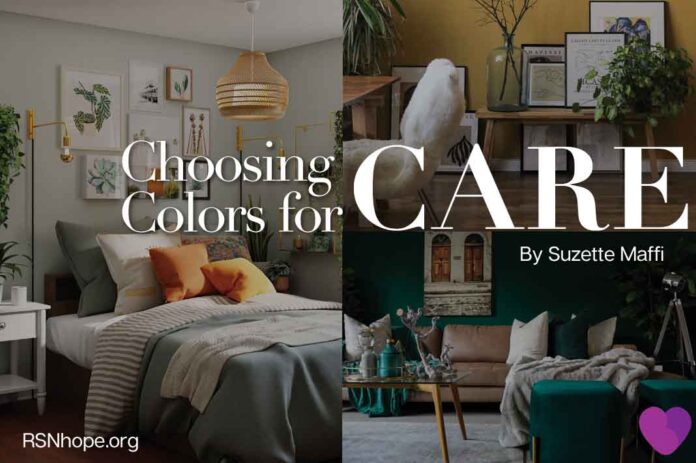When you have a serious health issue such as kidney disease, an environment that has colors to support your mood can make you feel better.
Color palettes (combinations of different colors) are designed to make you feel a certain way. Research shows that color can drive your mood and sway your thinking. It can also change your actions and cause reactions. Color can irritate or soothe your eyes, raise your blood pressure, or enhance or suppress your appetite. For example, some fast-food restaurant owners know they can boost their profits if they decorate with colors that are known to make people hungry.
This principle is known as “color psychology.” You can use it to make your home environment a soothing one, and you don’t need a college degree to do it.
Some colors are good for relaxation, and some have the opposite effect. People with kidney disease often say they have trouble sleeping at night. If you have this problem, try decorating your bedroom in muted cool tones like soft blues, pastel purples, or greens, which are often described as calming. Green signifies growth and rebirth. Purple symbolizes magic, creativity, and dignity. If you have a craft room, you may want to use it there.
It is said that blue has more complex and contradictory meanings than any other color. Some research shows that the color blue can result in a lower heart rates and slower metabolism. Most blues convey a sense of trust, loyalty, cleanliness, and understanding. Blue can also signify hope and good health. It can do double duty in your bedroom if that’s where you also do dialysis.
Too often, when you enter a healthcare setting you see bright colors. These colors foster alertness, which is not conducive to rest and relaxation. Think about the bright, intense colors, such as red, golden yellow, and magenta, used often at parties and festivals. These are considered “warm” colors, and they can keep you dancing long into the wee hours of the night! Avoid using these colors in your bedroom if you have trouble falling asleep.
When using color in other rooms in your home, always think about your own likes and dislikes. Before designing any room, it can be fun to start with a piece of artwork you really love to design the room around. You also will have something pleasant to look at while you rest.


If you don’t know what colors to choose start with Pinterest or Houzz. It is always fun to add a pop of color with paint to one wall. It can change the entire feel and look of a room.
If you are setting up an area separate from your bedroom, design with colors that make you feel your best. Many people choose yellow. It’s the color of happiness and creativity, sunshine and spring. If you do home dialysis, brighten the room where you spend time on the dialysis machine with a cheerful, sunny yellow, which can help make you feel optimistic, or choose a light orange, which can leave you feeling healthy and cheerful. Colors like peach, light pink, or lilac can also lift your mood.
Lighting is also very important. You can dim the lights in a brightly colored room if you want to get some rest during treatment. Or turn all the lights on to be able to safely set up your dialysis machine.
Aside from color, another tip for relaxation is to remove as much clutter from your relaxation or sleep space as possible. Too much clutter and disorganization can be distracting, and in some people it can cause anxiety. Do you have boxes of supplies that you need to keep around the house? Hide them behind a room divider or screen. You can also create a bench style stack of your supply boxes and cover them with a throw blanket in an appropriate color.
Don’t be afraid to experiment! Always try to remember to design a room to fit the specific purpose of that room. You may even have fun doing it!
 Suzette Maffi is a marketing professional, a graphic designer and a home décor enthusiast. When she’s not busy manning RSN’s marketing and communications desk she can be found working on home DIY projects and rescuing homeless dogs and cats. Suzette lives in Austin, TX with her husband, four dogs, three cats and a regular rotation of foster pets.
Suzette Maffi is a marketing professional, a graphic designer and a home décor enthusiast. When she’s not busy manning RSN’s marketing and communications desk she can be found working on home DIY projects and rescuing homeless dogs and cats. Suzette lives in Austin, TX with her husband, four dogs, three cats and a regular rotation of foster pets.
Web ID 4045







